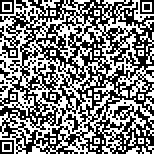| 引用本文: | 贺雅琪,邓银河,莫嘉浩,陈洁,杨忠奇,冼绍祥.2009—2019年中药专利复方治疗失眠的用药规律[J].中国现代应用药学,2020,37(16):1926-1932. |
| HE Yaqi,DENG Yinhe,MO Jiahao,CHEN Jie,YANG Zhongqi,XIAN Shaoxiang.Medication Rules of Traditional Chinese Medicine Patent Compound Prescriptions in Treating Insomnia in 2009-2019[J].Chin J Mod Appl Pharm(中国现代应用药学),2020,37(16):1926-1932. |
|
| 本文已被:浏览 9706次 下载 4751次 |

码上扫一扫! |
|
|
| 2009—2019年中药专利复方治疗失眠的用药规律 |
|
贺雅琪1,2, 邓银河1, 莫嘉浩3, 陈洁1,2, 杨忠奇1,2, 冼绍祥1,2
|
|
1.广州中医药大学第一附属医院, 广州 510405;2.广州中医药大学岭南医学研究中心, 广州 510405;3.广州中医药大学第二临床医学院, 广州 510405
|
|
| 摘要: |
| 目的 分析中药复方治疗失眠的用药配伍规律。方法 以国家知识产权局专利检索及分析系统为数据来源,检索治疗失眠的中药复方;采用古今医案云平台(V1.5.7)、SPSS Clementine 12.0软件、SPSS 22.0软件分别进行频次统计、中药四气五味及归经统计、关联分析、聚类分析、主成分分析等挖掘探讨中药专利复方治疗失眠的用药规律。结果 通过检索和筛选,得到中药复方528首,中药327味,平均每首复方包含12.77味中药;得到30种高频中药,以养心安神、补气、补血等最常用,四气以平、温、微寒为主,五味以甘、苦、辛味为多见,归经以心、肝经最多。关联规则分析共得到76条,包括药对52条,三味及四味药组20条和4条。聚类分析得到9个药组,主成分分析得到特征值>1的主成分有12个。结论 本研究所得结果有一定应用价值及创新性,但因专利质量等问题存在一定局限。 |
| 关键词: 失眠 睡眠障碍 中药专利 复方专利 用药规律 数据挖掘 |
| DOI:10.13748/j.cnki.issn1007-7693.2020.16.002 |
| 分类号:R285.6 |
| 基金项目:国家自然科学基金项目(81673796) |
|
| Medication Rules of Traditional Chinese Medicine Patent Compound Prescriptions in Treating Insomnia in 2009-2019 |
|
HE Yaqi1,2, DENG Yinhe1, MO Jiahao3, CHEN Jie1,2, YANG Zhongqi1,2, XIAN Shaoxiang1,2
|
|
1.The First Affiliated Hospital of Guangzhou University of Chinese Medicine, Guangzhou 510405, China;2.Lingnan Medical Research Center of Guangzhou University of Chinese Medicine, Guangzhou 510405, China;3.The Second Clinical Medical College of Guangzhou University of Chinese Medicine, Guangzhou 510405, China
|
| Abstract: |
| OBJECTIVE To analyze the medication rule of traditional Chinese medicine compound prescription for insomnia. METHODS The Chinese medicine compound prescriptions for insomnia were retrieved by searching Patent Search and Analysis of SIPO. The Ancient and Modern Medical Records Cloud Platform(V1.5.7), SPSS Clementine 12.0 software and SPSS 22.0 software were used respectively for the frequency statistics, four nature and five flavors of traditional Chinese medicine, meridian attribution statistics, correlation analysis, cluster analysis and principal component analysis to explore the medication rules of patent compound prescriptions for insomnia. RESULTS A total of 528 Chinese medicine compound prescriptions were screened and 327 Chinese medicines were obtained with an average of 12.77 Chinese medicines per compound prescription. Thirty high frequency Chinese medicines were obtained, and the most commonly used drugs were nourishing heart and calming mind drugs, Qi-tonifying drugs and Blood-tonifying drugs. The medication of four nature was mainly calm, warm and slightly cold, while the five flavors were mainly sweet, bitter and pungent, and the meridians of heart and liver were the most common. A total of 76 items were obtained by association rule analysis. Including 52 pairs of medicine, 20 and 4 pairs of medicine of three and four groups respectively. Nine medicine groups were obtained by cluster analysis, and 12 principal components with eigenvalue >1 were obtained by principal component analysis. CONCLUSION The results obtained are valuable and innovative, but there are some limitations due to the quality of patents. |
| Key words: insomnia sleep disorders traditional Chinese medicine patent compound patent medication rule data mining |
